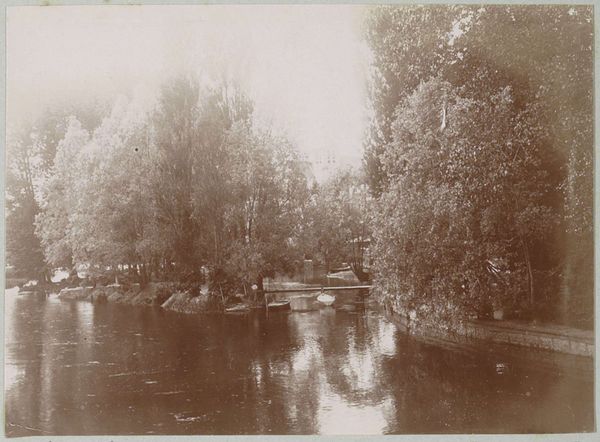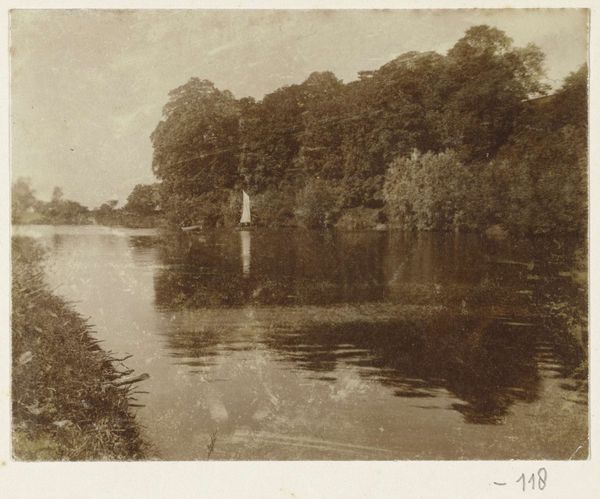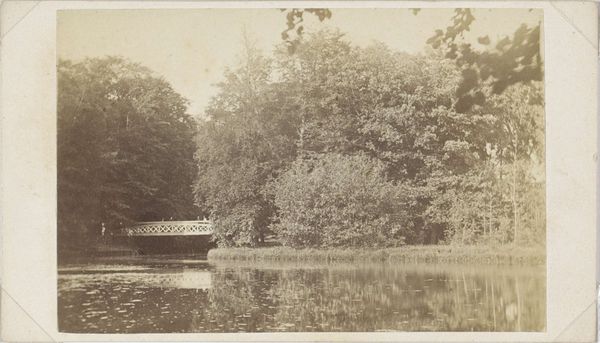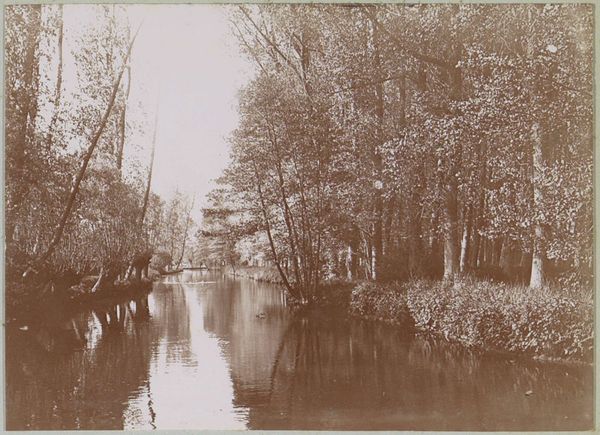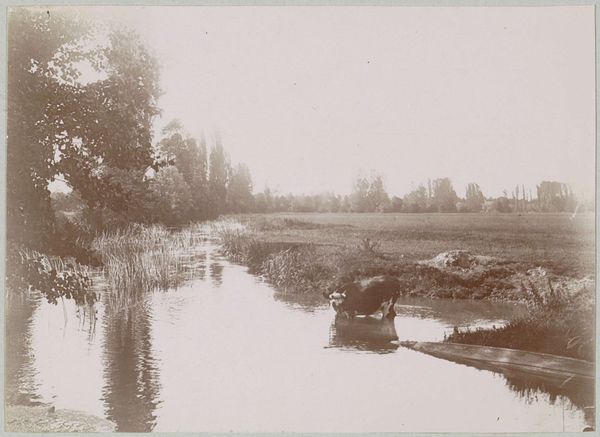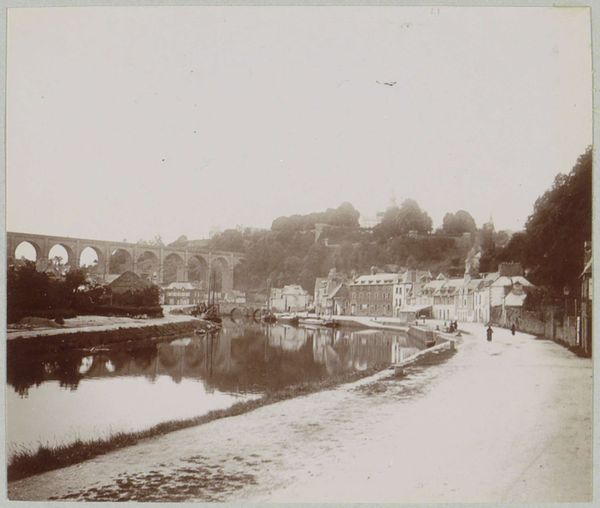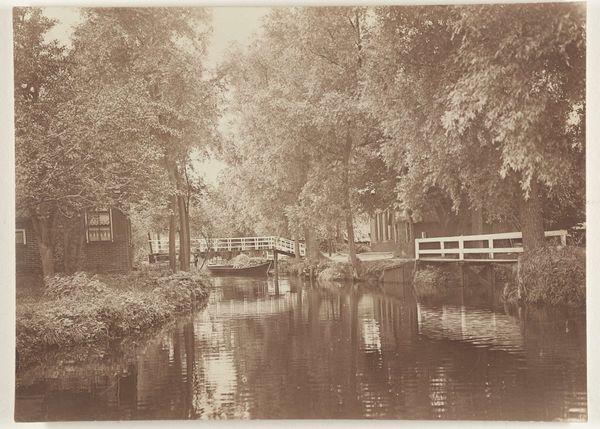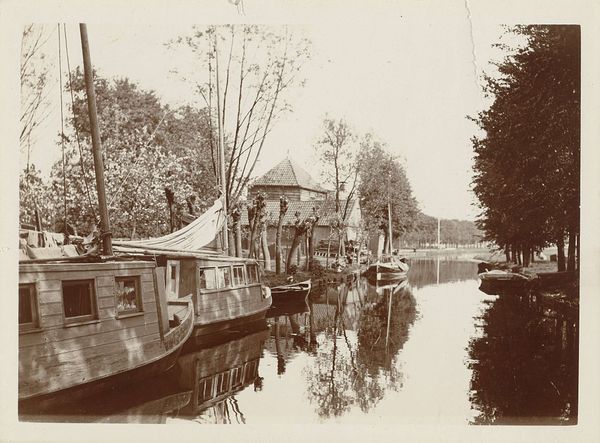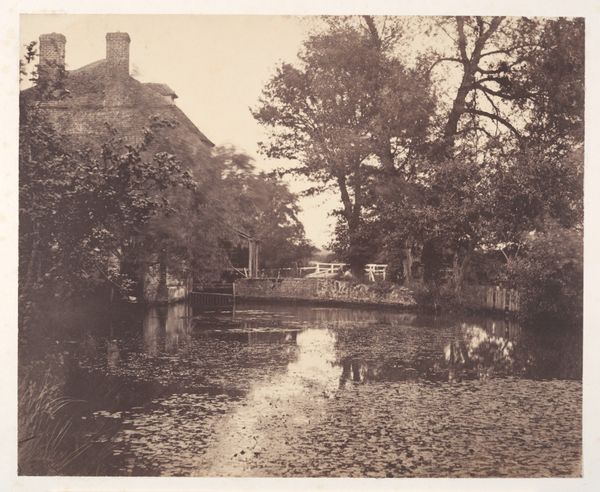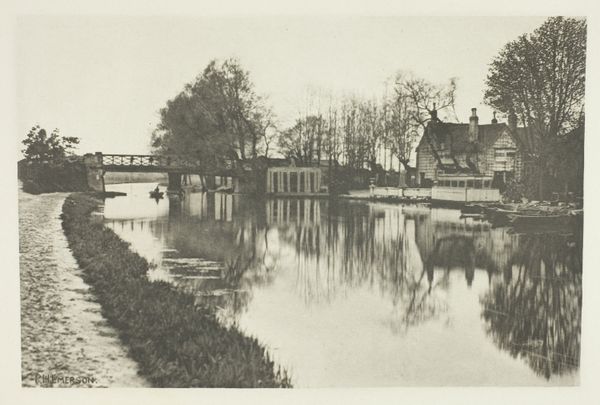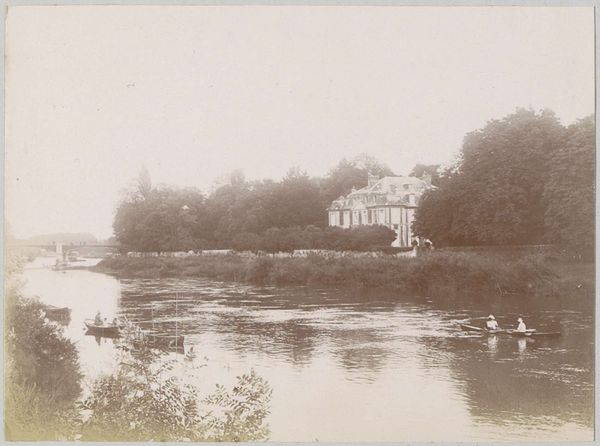
Dimensions: height 80 mm, width 110 mm
Copyright: Rijks Museum: Open Domain
Curator: Oh, this photograph... It feels like stepping into a dream veiled in sepia tones. Editor: Agreed, there’s a wistful tranquility here, almost muted. Curator: We're looking at "Water bij Montigny-sur-Loing," taken in 1896. The photographer, Delizy, really captures the essence of the French countryside at the turn of the century. It now resides here at the Rijksmuseum. Editor: That soft light really does something for me, like memories half-faded. Water so still it mirrors the sky – and all those leafy trees. I can almost hear the faint rustling, and that building almost feels precarious! There's also two lonely boats tied at both banks, adding to the dream-like effect. Curator: I think it's interesting to consider that, beyond the purely aesthetic, photographs like these became documents of record. Before rapid industrialization fully took hold. Editor: In terms of iconography, the image uses reflections – an important visual element often utilized for meditation. The boats too signify travel and a metaphorical journey. In that time period the journey through life itself. Curator: Yes, very clever observation! There's almost a timeless quality – you see similar scenes in landscape painting for centuries before photography. This one also strikes me as a good example of realism and impressionism: the river accurately depicts its surface; and then that dreamy quality in post, the overall soft tone, almost blurred on purpose. It almost anticipates a turn toward pictorialism that comes later in photographic history. Editor: Exactly. And that quiet timelessness has me thinking. Are we drawn to images of tranquil nature now because our lives are just… the opposite? Seeking visual refuge. It would follow considering its period. Curator: Perhaps. As an artist you clearly look at the psychology and historical record; as an iconographer I can trace echoes of nature imagery far into our deep past and collective cultural memory. Editor: All those centuries blending in one little frame, who knew. It's made me see how art carries both the history it documents, and the future it reflects. Curator: Yes. And now I understand better the melancholy it inspired.
Comments
No comments
Be the first to comment and join the conversation on the ultimate creative platform.
